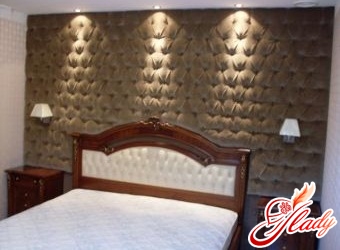 Repairs are a troublesome business.In addition to decent and very noticeable costs, it brings a cacophony of disorder into our home and eats up the lion's share of free time (and non-free time too). But, fortunately, new technologies allow manufacturers to produce such finishing materials that save both our money and our time. One of such products of modern construction materials production is decorative wall panels. Their undoubted advantages are low cost, durability, ease of installation and maintenance, as well as a wide variety of textures and colors. It is believed that this type of wall decoration is almost ideal. But is it really so? What do manufacturers offer us? How to understand all the variety of decorative panels and choose the most suitable ones? Let's figure it out.
Repairs are a troublesome business.In addition to decent and very noticeable costs, it brings a cacophony of disorder into our home and eats up the lion's share of free time (and non-free time too). But, fortunately, new technologies allow manufacturers to produce such finishing materials that save both our money and our time. One of such products of modern construction materials production is decorative wall panels. Their undoubted advantages are low cost, durability, ease of installation and maintenance, as well as a wide variety of textures and colors. It is believed that this type of wall decoration is almost ideal. But is it really so? What do manufacturers offer us? How to understand all the variety of decorative panels and choose the most suitable ones? Let's figure it out.
Types of decorative panels
 Today, decorative wall panels can be natural or artificial. Natural materials used in the production of panels are wood, stone, plant materials and leather.
Today, decorative wall panels can be natural or artificial. Natural materials used in the production of panels are wood, stone, plant materials and leather.
Considering the availability and popularity of plastic and chipboard panels, let's take a closer look at these types of decorative panels.
Panels from wood-plate materials
 DPM – this is what manufacturers call materials,obtained during the processing of waste from woodworking industries (chips, fibers, sawdust, etc.). DPM panels consist of a plywood base, wood boards or hardboard, and are decorated with veneer, polymer film or paper on top. Of course, these are not real decorative wooden wall panels, but they can be conditionally classified as such. Since they are a democratic alternative to solid wood panels, manufacturers try to design these panels to look like natural wood. Such similarity (sometimes almost indistinguishable) is achieved through a special decorative coating and milling of the panels. With the help of milling, a solid sheet is visually divided into separate "boards". However, the traditional "wood" pattern is not the only solution in the design of DPM panels. They are painted with an abstract pattern, decorated to look like natural stone and use the most unexpected color solutions. The weak point of wood-based panels is moisture resistance (the most moisture-resistant of all types of such panels are plywood-based panels). And although the resins and adhesives included in their composition increase resistance to changes in humidity, they are not always harmless to human health. Therefore, when buying decorative DPM panels, you need to ask the seller for a conclusion from the State Sanitary and Epidemiological Supervision on compliance with hygienic requirements. Otherwise, a pleasant purchase can turn into big troubles for health.
DPM – this is what manufacturers call materials,obtained during the processing of waste from woodworking industries (chips, fibers, sawdust, etc.). DPM panels consist of a plywood base, wood boards or hardboard, and are decorated with veneer, polymer film or paper on top. Of course, these are not real decorative wooden wall panels, but they can be conditionally classified as such. Since they are a democratic alternative to solid wood panels, manufacturers try to design these panels to look like natural wood. Such similarity (sometimes almost indistinguishable) is achieved through a special decorative coating and milling of the panels. With the help of milling, a solid sheet is visually divided into separate "boards". However, the traditional "wood" pattern is not the only solution in the design of DPM panels. They are painted with an abstract pattern, decorated to look like natural stone and use the most unexpected color solutions. The weak point of wood-based panels is moisture resistance (the most moisture-resistant of all types of such panels are plywood-based panels). And although the resins and adhesives included in their composition increase resistance to changes in humidity, they are not always harmless to human health. Therefore, when buying decorative DPM panels, you need to ask the seller for a conclusion from the State Sanitary and Epidemiological Supervision on compliance with hygienic requirements. Otherwise, a pleasant purchase can turn into big troubles for health.
Plastic decorative panels
 This type of finishing material remains the mostpopular among Russian buyers. The reason for this is not only the most affordable prices, but also other important advantages. For example, plastic decorative panels for walls are characterized by high heat and noise insulation, durability, ease of installation, resistance to external influences and excellent decorative qualities. In their design, plastic panels are similar to DPM panels: they also have a base (only polymer) and a decorative coating. The internal cavity of these panels has a honeycomb structure and plastic stiffeners. The pattern is applied to plastic panels in two ways: according to the principle of a transfer picture and by thermal printing or offset printing. Polystyrene panels are considered the highest quality plastic panels. Unlike polyvinyl chloride, this material is more environmentally friendly (if such a definition is generally suitable for plastic), it is easy to cut, it does not crack or break. Polystyrene panels also have a more interesting texture and color. For example, models that imitate metal are so close to the original that even experienced people cannot always notice the imitation.
This type of finishing material remains the mostpopular among Russian buyers. The reason for this is not only the most affordable prices, but also other important advantages. For example, plastic decorative panels for walls are characterized by high heat and noise insulation, durability, ease of installation, resistance to external influences and excellent decorative qualities. In their design, plastic panels are similar to DPM panels: they also have a base (only polymer) and a decorative coating. The internal cavity of these panels has a honeycomb structure and plastic stiffeners. The pattern is applied to plastic panels in two ways: according to the principle of a transfer picture and by thermal printing or offset printing. Polystyrene panels are considered the highest quality plastic panels. Unlike polyvinyl chloride, this material is more environmentally friendly (if such a definition is generally suitable for plastic), it is easy to cut, it does not crack or break. Polystyrene panels also have a more interesting texture and color. For example, models that imitate metal are so close to the original that even experienced people cannot always notice the imitation.
Installing Panels
 Installation of wall panels occurs in various waysmethods that have their own characteristics. The tongue and groove connection is typical for prefabricated panels. With this connection, the panels are attached either directly to the wall, having previously leveled its surface, or to the sheathing. The panels are screwed with self-tapping screws, which are screwed into a wide mounting shelf (the strip of the connecting "lock"). The heads of the self-tapping screws are covered with a "tongue" of the next panel. Some manufacturers produce panels with special hooks, by which the panel is attached to the sheathing. Thin sheet panels are glued to the wall with universal construction adhesives. In this case, the wall surface is pre-prepared: old coatings are removed, cleaned and leveled. They begin to install decorative panels from the inner corner of the room, making a gap of 2-3 mm between them. After the glue has completely dried, the seams are sealed with silicone sealant. Before starting installation, determine the places for placing shelves, sockets, mirrors and lamps in order to know where to drill holes for fasteners. The installation is completed by finishing the installed panels with moldings, corners and baseboards, with the help of which all joints and edges are decorated. Finishing walls with decorative panels allows you to implement a wide variety of design ideas: panels easily replace many finishing materials. Panels are good for those who want to save on repairs and for those who dream of a luxurious and sophisticated interior. You just need to choose something that will match the original idea. And the variety of textures and decorativeness of the panels, coupled with a wide range of prices, will certainly allow you to do this.
Installation of wall panels occurs in various waysmethods that have their own characteristics. The tongue and groove connection is typical for prefabricated panels. With this connection, the panels are attached either directly to the wall, having previously leveled its surface, or to the sheathing. The panels are screwed with self-tapping screws, which are screwed into a wide mounting shelf (the strip of the connecting "lock"). The heads of the self-tapping screws are covered with a "tongue" of the next panel. Some manufacturers produce panels with special hooks, by which the panel is attached to the sheathing. Thin sheet panels are glued to the wall with universal construction adhesives. In this case, the wall surface is pre-prepared: old coatings are removed, cleaned and leveled. They begin to install decorative panels from the inner corner of the room, making a gap of 2-3 mm between them. After the glue has completely dried, the seams are sealed with silicone sealant. Before starting installation, determine the places for placing shelves, sockets, mirrors and lamps in order to know where to drill holes for fasteners. The installation is completed by finishing the installed panels with moldings, corners and baseboards, with the help of which all joints and edges are decorated. Finishing walls with decorative panels allows you to implement a wide variety of design ideas: panels easily replace many finishing materials. Panels are good for those who want to save on repairs and for those who dream of a luxurious and sophisticated interior. You just need to choose something that will match the original idea. And the variety of textures and decorativeness of the panels, coupled with a wide range of prices, will certainly allow you to do this.









